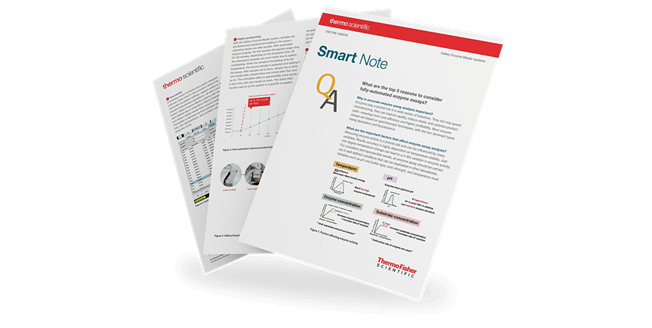
Enzymes play a pivotal role in a wide variety of industries. They not only speed manufacturing, they can improve quality, reduce waste, and optimize product yield—ensuring more cost-efficiency and higher profitability. Most enzyme assays are based on spectroscopic techniques, with the two dominant types being absorption and fluorescence.
Measuring enzyme activity is a precise job and can be influenced by many variables. Results accuracy is highly dependent on temperature stability. Just one degree temperature change can lead to a 4–8% variation in enzyme activity. For consistent and reproducible results, an enzyme assay should be carried out in well-defined conditions that can be duplicated in other laboratories. Variables such as pH and buffer type, ionic strength, and temperature must be strictly controlled. pH is a critical parameter in method development and routine enzyme assay measurement. pH affects the enzyme activity, charge, and shape of the substrate, so that the substrate cannot bind to the active site or cannot be catalyzed to form a product. All enzymes have an ideal pH value, which is called optimal pH. Under the optimum pH conditions, each enzyme showed the maximum activity. Determination of the optimum pH in a coupled enzyme assay poses significant challenges because altering the pH of the reaction mixture can affect the performance of both enzymes. Fixing the other variable will allow to correlate the change in measuring parameter and absorbance directly to the enzyme assay or enzyme activity. Reliable enzyme assay development is critical and the automated enzyme analyzers simplify the overall method development and results reliability.





